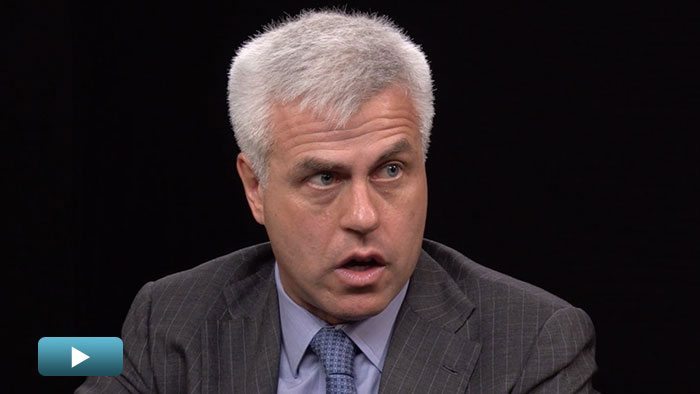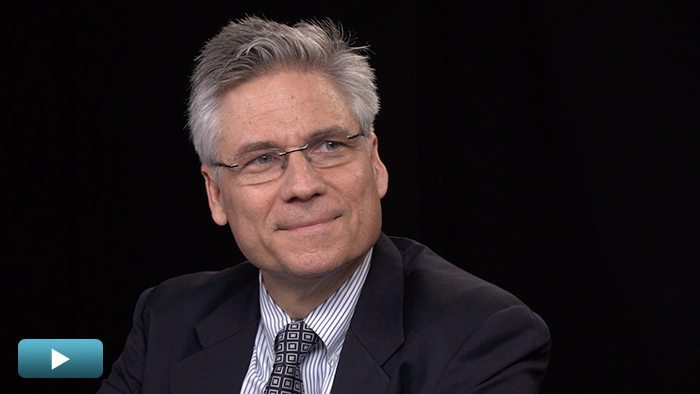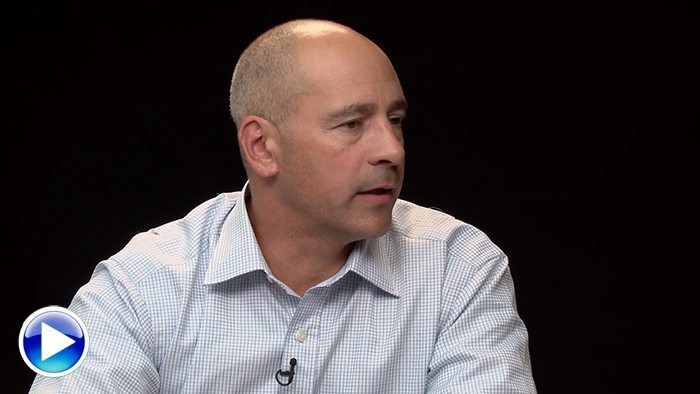Brazil’s Alternative Real Estate Opportunity
Education is key to Brazil’s nascent alternative real estate sectors of self-storage, student housing, and senior living, but for Prolifico founding partner Peer Buergin the growth potential is tremendous.
Transcript Download Transcript
Brazil’s Alternative Real Estate Opportunity
With Peer Buergin of Prolifico
Zoe Hughes, PrivcapRE: I’m joined here today by Peer Buergin, CFO, COO and founding partner of Prolifico. Peer, thank you so much for joining me today.
Peer Buergin, Prolifico: Thanks for having me.
Hughes: A lot of investor attention has been paid to the alternative real estate space, particularly in the U.S. through developed markets in Asia and Europe. Now Prolifico is actually targeting alternative real estate, particularly senior housing, student housing, self-storage and data centers in Brazil. Talk to me about the opportunities that you’re seeing on the ground. This is not just an emerging markets play, but actually an emerging asset class play. What are you seeing?
Buergin: Yes indeed, the markets are quite early stage, so alternative real estate is a new asset class in Brazil. However, if you look abroad in pretty much any single country these products have been introduced in, they work pretty much everywhere. And the reason is that the product is a necessity. So at the initial stages it’s more about educating the markets, or about promoting the concept, whether it’s self-storage, senior living, or student housing.
Hughes: Talk to me about your activity and your equity deployment over the next 12 to 18 months. What sector do you find the most compelling within Brazil?
Buergin: I would say the self-storage market. Firstly, because our firm is most advanced in that market today; but also secondly, because the market as such is the most institutionalized. It’s still very early stage, but it has at least a proper association. It’s got institutional capital allocated to it to some extent already. And we can see that growth is likely to accelerate sooner rather than later in that market—before the others.
Hughes: Talk to me about that growth. I did hear some figures that there are literally just 120 self-storage facilities in Brazil, and that compares to the U.S. with 50,000. What are your expectations for growth potential?
Buergin: The numbers speak for themselves, don’t they? It’s very early stage still. No one is expecting the market to reach U.S. standards of 50,000 facilities, as you just mentioned. But the second sense amongst the operators locally is that there’s room for about 5,000. So of the 120 existing—of which most are moms and pops—you can only imagine how little-penetrated the market really is and how big the growth potential [is].
Hughes: Where are you having to locate? Do you concentrate on the key cities? Is it new development?
Buergin: First, there are gateway cities. Those are definitely the low-hanging fruits, mainly because that’s where you would have residents who will have heard about the concept. Or, the market’s a bit more advanced [there], as well as where new ideas tend to emerge. Also they may have traveled abroad and seen it, or lived abroad even. But the potential definitely doesn’t stop there. If you talk about self storage, there are 20 cities with over 1M in population in Brazil. There’s obviously no reason why there shouldn’t be a number of self-storage facilities in every single one of these 20 cities.
Hughes: Is it all new development for yourself?
Buergin: It’s both, actually. All these businesses have a very strong underlying real estate play. And real estate is opportunistic to some extent. And they’re also all urban phenomenon, which means that you get what you get, basically. And we are very much open to retrofits. Currently we are doing a retrofit and a greenfield development at the same time.
Hughes: I know there’s a real operational aspect to a lot of alternative real estate, particularly when you get into the senior housing and student housing sectors. Talk to me about how you’re structuring the operation side of it. I believe it’s like op-co/prop-co.
Buergin: Firstly, because these markets are all pretty early stage in Brazil, there’s a natural need to transfer know-how from abroad, which justifies Prolifico’s DNA as being part foreign, part Brazilian. For instance, we partnered up with the CEO and the co-founder of Big Yellow, which is one of the leading European self-storage owners and operators—one of the largest, and also the most recognized brand. We structured this as an op-co/prop-co deal. We’re pretty structure- agnostic, but we structured it that way because it maximized flexibility with regards to growth as much as exit.
Hughes: Does this give you much more greater flexibility in terms of the exit? How do you view the exit?
Buergin: Firstly, REITs is a growing market in Brazil. Brazilian REITs, the analogist to it. If we were to exit as a REIT, which is quite likely, you would want to keep the operations and the asset separate. But a straight-up IPO is as likely a scenario. In [that] case, you would merge the real asset’s SPVs with the operations beforehand. Keeping it separate potentially provides for additional opportunities with regard to debt financing and securing that financing down the road.
Hughes: Let’s have a quick look at senior housing, because one of the stereotypes [is] that Brazil is an exceptionally young country. You wouldn’t have perhaps seen the demand that you’re expecting, particularly for Europe and the U.S. How [does] Prolifico see that demand, and also, where are you allocating your resources?
Buergin: People tend to think that Brazil has a demographic bonus. That was definitely truer 10 years ago than it is today, and the reason being that with this increased middle class, the fertility rate has come down. Also, life expectancy with increased quality of life has gone up, which means the population over 80 years old is expected to grow by over 5 percent a year until 2050. It basically provides for entry-level senior living demand, which is going to grow exponentially over the next few years.
Then, with regards to culture, the market is a bit different from the U.S. A Brazilian doesn’t take care of his parents like an American would, let’s say. But that doesn’t mean that your parent needs to actually share a room in the same apartment or the same home. What it does mean though is that…
Hughes: There is that culture, isn’t there? Being much closer to the family and much tighter knit, as it were.
Buergin: Definitely, yeah exactly. What it means is that your parents should be a drive away. You should be able to visit them on a regular basis. Since the children tend to work and live in the cities, that means that the parents could have to be near or inside the city as well.
Hughes: When it comes to senior housing, is your activity concentrated on Sao Paulo? Rio [de Janeiro]? Where are you looking for the best opportunities?
Buergin: Again, we are between Sao Paulo and Rio from a partner and office point of view. This is definitely our first access of focus, let’s say. But Rio has some dynamics a bit like Florida in the sense that the climate is quite agreeable to the elderly population. The population percentage of the elderly tends to be higher, so Rio would be the primary focus.
Hughes: And it is, because it’s exceptionally operationally intensive. In the U.S., across Europe, are you doing the same things in terms of that op-co/prop-co—the getting the operating team in place, and concentrating on the real estate, separating the two?
Buergin: Definitely. We definitely do that, and who we partnered [with] up there is also someone who’s got quite a bit of experience in developing these businesses in the southern region of Europe—so countries like Spain or Italy, who share a lot of common cultural background with Brazil. The product is likely to be similar.
Hughes: Give me a quick overview in terms of student housing. Again, you’re talking about [how] there’s a very different culture in Latin America and Brazil. Are they beginning to move away more from their parents, more [away] from their families?
Buergin: There’s definitely a trend like that. Today the student population is about 6M, of which 10 percent to 30 percent live and study abroad, away from their hometown. Depending on the city, that population is expected to double until 2020, so it provides for 500,000 to 1M of direct student population in potential markets. The first low-hanging fruit, so to speak, is the first-year student who is leaving the parents’ house for the first time where parents are very concerned about security, safety and amenities, and having the children blend into a network of sorts—so [they’re] willing to pay almost a premium for a facility that offers such services.
Hughes: As we’ve mentioned, these are very much emerging asset classes within an emerging market play. You’ve got double the emerging. How do you get that strategy across to investors?
Buergin: So far, investors have been pretty much all foreign. That is because [of], again, downturned market education. If you speak to a U.S. investor or a European investor [and] you mention self-storage, you don’t have to spend any time explaining if the product works and what it is. In Brazil, it’s a bit different. We think that over the next three to five years this will pick up significantly in Brazil. You will see a tremendous increase in the awareness of these products.
Hughes: Are you seeing a real shift in domestic investors’ sophistication in terms of investing in real estate?
Buergin: It’s started. So institutional investors—just to come back to the point—have started already in self-storage from the likes of Texas Teachers, who have recently invested in the market leader. Locally there hasn’t [been much] yet, but local pension funds that have historically owned a few corporate bonds and blue chips have now started to diversify into alternatives. Within alternatives, real estate has a lion’s share. And, within real estate, it’s only a matter of time until they will finally pick up on the concept of alternative real estate.



